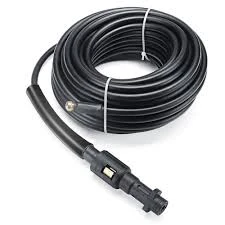Understanding the Function and Maintenance of Brake Booster Vacuum Hoses
Understanding Brake Booster Vacuum Hoses Importance and Maintenance
The brake system is one of the most critical safety features in any vehicle, and its efficiency largely depends on a well-functioning brake booster. Among the essential components of a brake booster is the vacuum hose, which plays a pivotal role in enhancing braking performance. In this article, we will explore the function of the brake booster vacuum hose, its significance, common issues, and maintenance tips to ensure optimal operation.
What is a Brake Booster?
Before delving into the vacuum hose's role, it's crucial to understand what a brake booster is. The brake booster is a device that uses vacuum pressure to amplify the force applied to the brake pedal, making it easier for drivers to stop their vehicles. This enhancement is particularly important in larger vehicles such as trucks, where manual braking requires significantly more effort.
Role of the Vacuum Hose
The vacuum hose connects the brake booster to the engine's intake manifold, where it draws vacuum pressure. This vacuum is essential for the proper functioning of the brake booster. When a driver presses the brake pedal, atmospheric pressure versus vacuum pressure creates a force that assists in braking. Whenever the brake pedal is engaged, the vacuum hose allows air to enter the brake booster, allowing it to engage and multiply the force exerted by the driver.
Importance of Maintaining the Vacuum Hose
Maintaining the brake booster vacuum hose is critical for several reasons. First and foremost, a damaged or leaking vacuum hose can lead to a significant loss of braking power. When the vacuum system is compromised, the brake booster cannot generate the necessary force, resulting in a harder brake pedal and reduced braking efficiency. This situation not only compromises driver safety but also increases the risk of accidents.
Furthermore, a faulty vacuum hose can trigger warning lights on the dashboard and lead to irregular engine performance. For example, a vacuum leak might affect the engine's air-fuel mixture, resulting in misfires or poor fuel economy. Regular checks on the vacuum hose can help prevent these issues before they escalate.
Common Issues with Brake Booster Vacuum Hoses
brake booster vacuum hose

Over time, vacuum hoses can become worn, cracked, or disconnected, leading to compromised performance
. Here are some common problems to watch out for1. Cracks and Leaks Exposure to heat and oil can cause the rubber material of the hose to deteriorate, leading to cracks. Even small leaks can significantly reduce braking efficiency.
2. Disconnection Hoses may become loose or disconnected, especially after a repair or maintenance procedure. It’s vital to ensure that all connections are secure.
3. Clogging Dirt, debris, or oil buildup can clog the vacuum hose, restricting airflow and reducing its effectiveness.
Maintenance Tips
To ensure the longevity and effectiveness of your brake booster vacuum hose, consider the following maintenance tips
- Regular Inspections Periodically check the vacuum hose for signs of wear, cracking, or disconnection. A visual inspection can often catch problems early.
- Replace When Necessary If you notice any signs of damage or leaks, replace the vacuum hose immediately. It’s a relatively inexpensive part that plays a critical role in your vehicle's safety.
- Professional Servicing During regular vehicle servicing, have a professional mechanic inspect the brake system and vacuum hoses. They can detect issues that may not be immediately visible.
In conclusion, the brake booster vacuum hose is an indispensable component of the braking system, significantly impacting vehicle safety and performance. By understanding its function and maintaining it properly, drivers can ensure their vehicles are equipped to handle any driving conditions safely. Regular maintenance not only prolongs the life of the brake system but also enhances the overall driving experience.
-
Ultimate Spiral Protection for Hoses & CablesNewsJun.26,2025
-
The Ultimate Quick-Connect Solutions for Every NeedNewsJun.26,2025
-
SAE J1401 Brake Hose: Reliable Choice for Safe BrakingNewsJun.26,2025
-
Reliable J2064 A/C Hoses for Real-World Cooling NeedsNewsJun.26,2025
-
Heavy-Duty Sewer Jetting Hoses Built to LastNewsJun.26,2025
-
Fix Power Steering Tube Leaks Fast – Durable & Affordable SolutionNewsJun.26,2025

